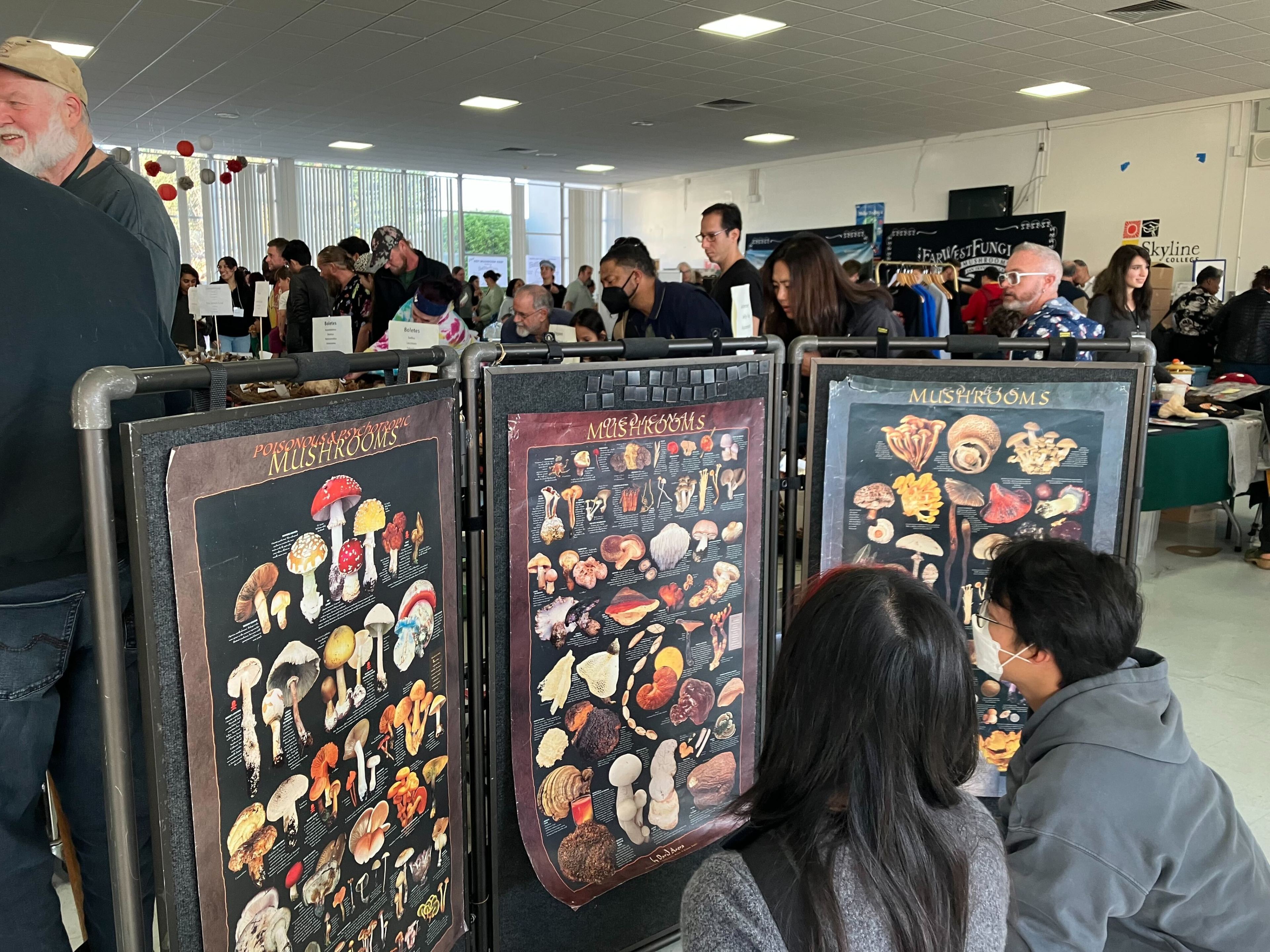Dressed with mushroom hats on their heads, self-proclaimed fungus fans Ashley Gates and Bri Sturgess gawked at the various fungi displays at the 51st annual Fungus Fair organized by the Mycological Society of San Francisco.
“We really love mushrooms,” Gates said Saturday. “I love that it’s a trend right now.”
Hundreds of fungus-obsessed Bay Area residents like Gates and Sturgess packed into El Camino High School in South San Francisco this weekend to listen to experts, buy mushrooms directly from foragers and talk with vendors who create mushroom-inspired merchandise.
Sturgess, who accompanied Gates to her first Fungus Fair, said that the crowd at Saturday’s event was surprising. “I went a couple years back when they held it at the San Francisco Botanical Gardens,” she said. “To see the scale of it now is really exciting.”
The size of the crowd Saturday was one of the topics of conversation that could be heard around the humid cafeteria. which held an area for displays, a psychedelic-expert table and edible mushrooms from shiitake to lion’s mane.
Ken Litchfield, cultivation expert and member of the Mycological Society of San Francisco, said organizers hope they can keep the event at the high school.
“It is the best one we have put on in quite a while,” he said. “We have to make sure that they are happy with us and we are happy with them. There’s a few things to tweak.”
Fungus fans looking to buy edible mushrooms had an array of options to select from, with prices set per pound. Many fungus shoppers walked around with bags filled with mushrooms.
Natalie Wren, president of the Mycological Society, said hosting the event at El Camino High gave the event a chance to expand. “We have more speakers than usual because of the amount of space,” she said. “This is a great venue for us.”
Wren said that the event encompasses the complexity of fungus and mushrooms with people coming to the event with a variety of connections to the topic.
“Mushrooms matter in different ways for different people,” she said. “Some people are here to eat them, some want to learn how to forage them. Some people want to talk about them, and some just want to look.”
This year, the Fungus Fair resumed its mushroom soup sales, which were paused after 2019 due to the pandemic. Bringing the soup back on the menu gives people who think they might not like to eat mushrooms a chance to try them.
“Maybe people think they don’t like mushrooms and then decide that they do after tasting the soups we have,” Wren said. “I think a lot of people are afraid of mushrooms because there is so much in the news about mushroom poisoning.”
Both Wren and Litchfield pointed out that the event acts as a space to educate those who may have misconceptions about mushrooms.
“This is all an educational experience,” Litchfield said. The goal of the event, he said, is to popularize fungus and mycology while celebrating those who came before and passed traditions down from foragers from yesteryear. “We are planting seeds right now [from people] who took it and ran with it from way back and who are still doing it.”
The event showcases how mushrooms can be used in a variety of ways. That was evident with the variety of vendor tents.
Elissa Callen, an artist peddling pigments and fungus-based inks, was among the vendors. It was a repeat event for her, after selling items and holding a workshop at last year’s edition.
“I found it is a great reward for people,” she said. “Using this to gain more curiosity and interest in these things that we live with that aren’t really far away. How can we engage our environments? And how we look at them and learn.”
